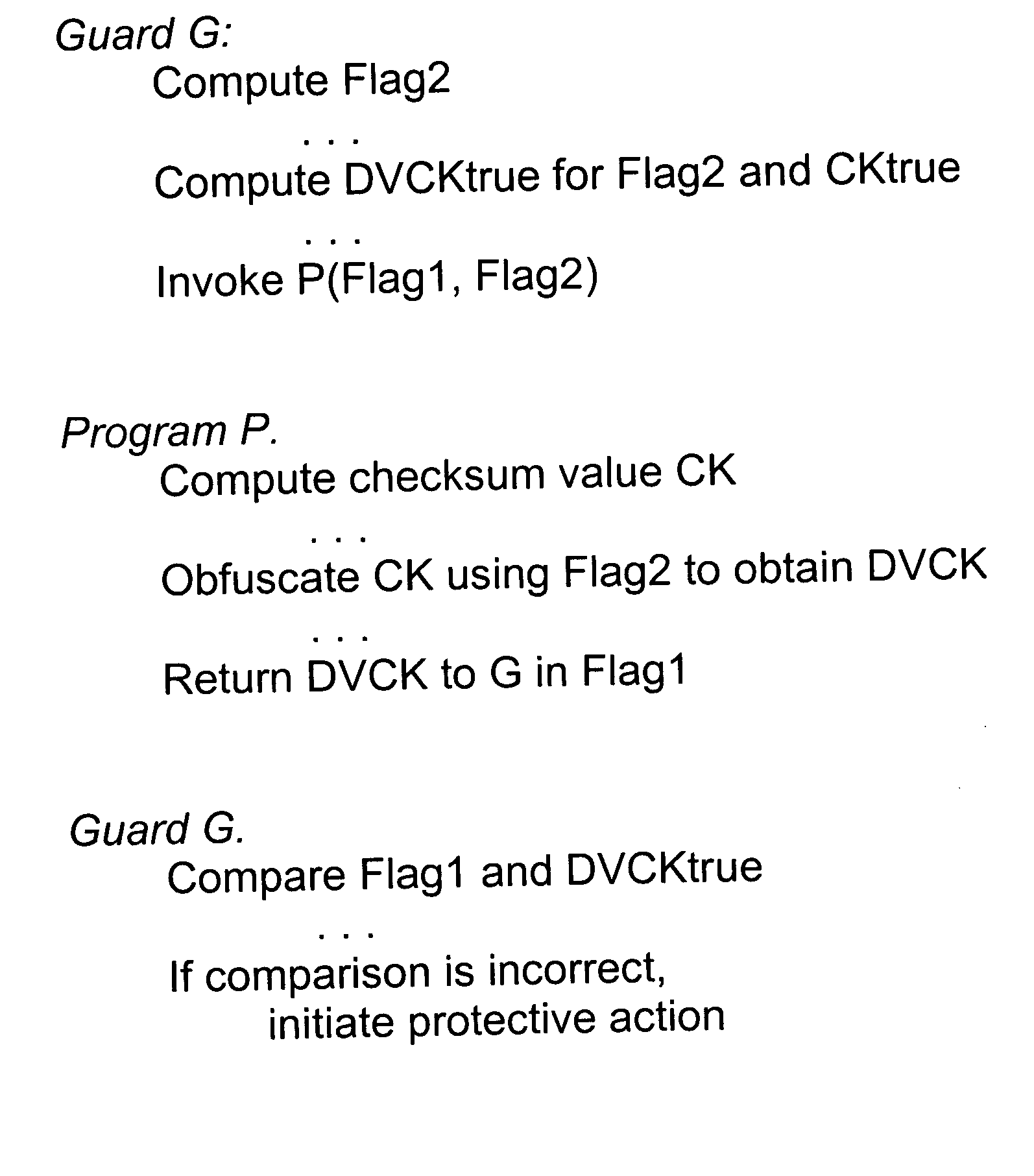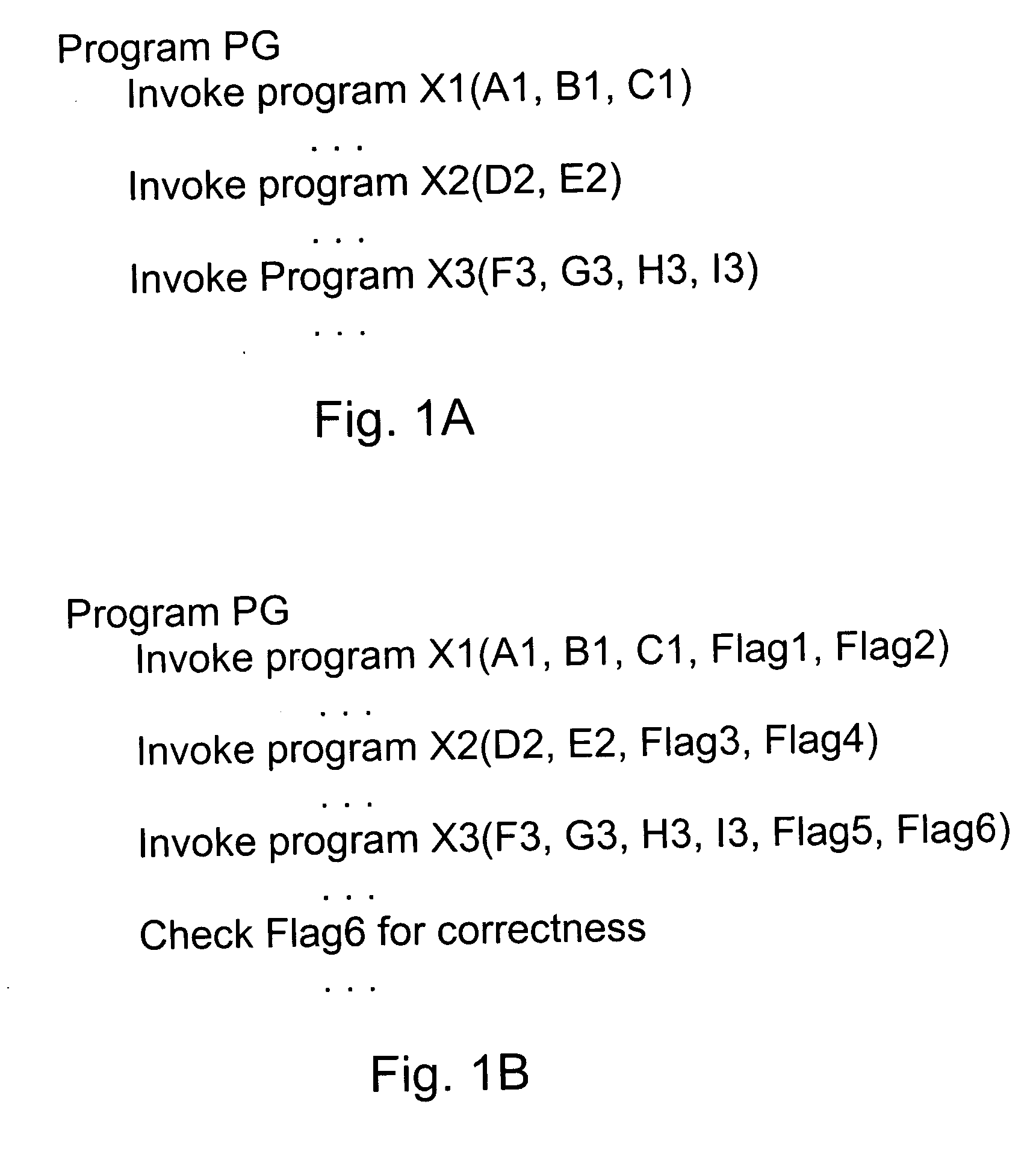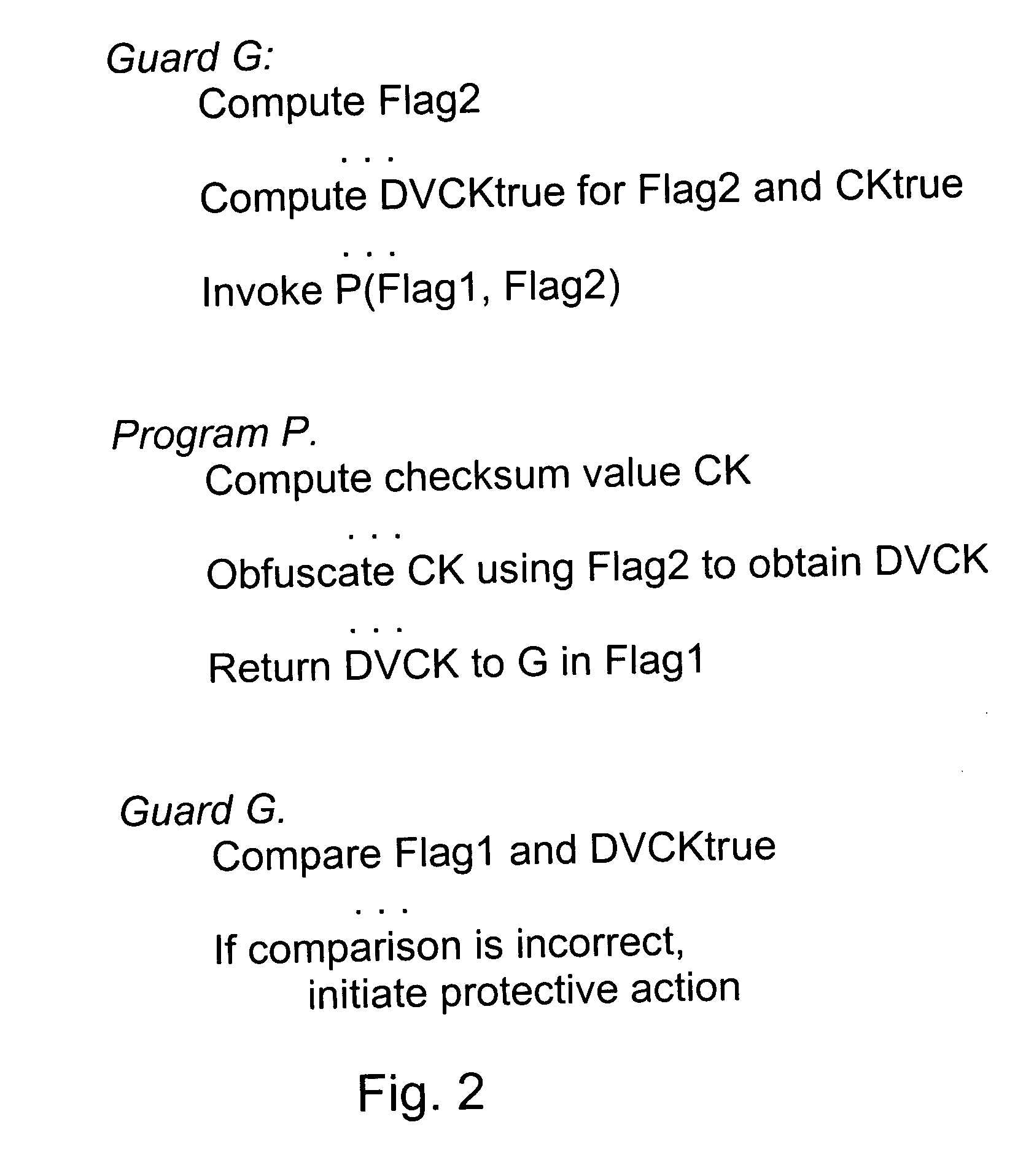Method and system for fortifying software
- Summary
- Abstract
- Description
- Claims
- Application Information
AI Technical Summary
Benefits of technology
Problems solved by technology
Method used
Image
Examples
Embodiment Construction
[0034] A software system is a set of computer programs that interact to perform a set of tasks. The components of a fortified software system can include programs, procedures, data, people and other items that communicate through transfers of control and exchanges of data. The components may be distributed within a simple machine, a complex machine or a network. The machine might be a general purpose programmable computer, a single purpose fixed program device, or anything in between.
[0035] A fortified system has three relevant elements: (a) the original codes of all of its programs; (b) the external interfaces of the system; and (c) the hardware that supports the software execution. The original code is the fortified software before it is fortified or protected from attacks. Hardware may execute programs, so we will distinguish between software and hardware by the assumption that the operation of the hardware is fixed and unchangeable over the lifetime of the fortified system. We ...
PUM
 Login to View More
Login to View More Abstract
Description
Claims
Application Information
 Login to View More
Login to View More - R&D
- Intellectual Property
- Life Sciences
- Materials
- Tech Scout
- Unparalleled Data Quality
- Higher Quality Content
- 60% Fewer Hallucinations
Browse by: Latest US Patents, China's latest patents, Technical Efficacy Thesaurus, Application Domain, Technology Topic, Popular Technical Reports.
© 2025 PatSnap. All rights reserved.Legal|Privacy policy|Modern Slavery Act Transparency Statement|Sitemap|About US| Contact US: help@patsnap.com



